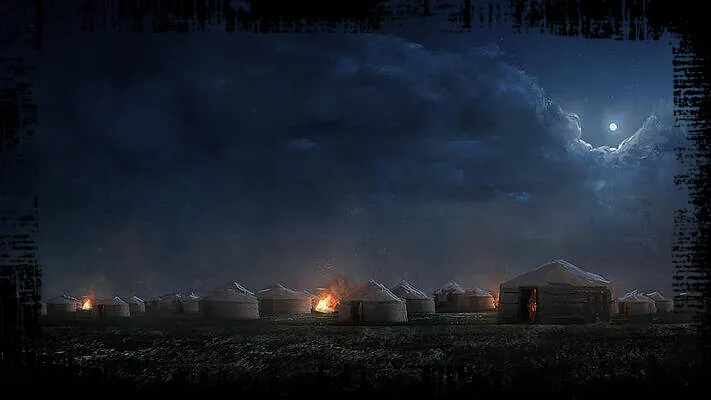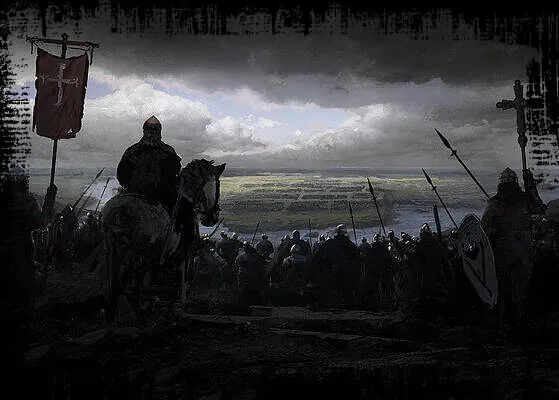SCROLL TO START EXPERIENCE
WELCOME TO MY INNER WORKINGS
PORTALS.
MOLECULES.MAYHEM.
SCROLL TO THE END
THERE'S AN UNNAMED WAR INSIDE THE MIND OF A CREATIVE DIRECTOR.
THE CARNAGE OF 13 YEARS.
WELCOME
TO MY INNER WORKINGS...
The Mongol invasion left Europe scarred but also opened new trade routes and expanded its view of the world.
CLICK HERE
FOR MY WORK.
SID | CREATIVE
FOR MY WORK.
SID | CREATIVE

Artwork by Joseph Feely
The Mongol war machine was built on discipline and speed, honed through years of conquest. Unlike the heavily armored knights of Europe, Mongol warriors wore lightweight armor, often made of silk and leather, which allowed them to move quickly and strike with agility.
The key to their success lay in their mobility—each soldier had multiple horses, allowing them to travel hundreds of miles at a pace unimaginable to European forces.
They communicated with smoke signals, flags, and messengers, coordinating their attacks with precision. In March 1241, Mongol vanguards advanced into Europe, using reconnaissance and stealth to outmaneuver their enemies.
The key to their success lay in their mobility—each soldier had multiple horses, allowing them to travel hundreds of miles at a pace unimaginable to European forces.
They communicated with smoke signals, flags, and messengers, coordinating their attacks with precision. In March 1241, Mongol vanguards advanced into Europe, using reconnaissance and stealth to outmaneuver their enemies.

Artwork by Joseph Feely
On April 9, 1241, at Legnica, the Polish nobility and their allies gathered for a decisive battle. What they faced, however, was unlike any enemy they had ever fought. The Mongols unleashed a combination of psychological and military warfare, using smoke bombs, arrows, and terrifying war cries to break enemy morale. Their tactical brilliance lay in their ability to fragment the enemy ranks and swiftly cut them down.
In Hungary, just days later, at the Battle of Mohi (April 11), the Mongols used river crossings and surprise flanking maneuvers to trap King Béla IV’s forces, leading to the massacre of thousands. Both kingdoms were left devastated, their defenses shattered.
In Hungary, just days later, at the Battle of Mohi (April 11), the Mongols used river crossings and surprise flanking maneuvers to trap King Béla IV’s forces, leading to the massacre of thousands. Both kingdoms were left devastated, their defenses shattered.

Artwork by Joseph Feely
Europe’s salvation came not through military might but a twist of fate. In December 1241, just as the Mongols were poised to press further into Europe, news arrived that the Great Khan Ögedei, Genghis Khan’s successor, had died. Mongol law required all princes to return to Mongolia for the selection of a new Khan. Batu Khan, reluctantly withdrawing his forces, obeyed the call.
Had Ögedei lived just a few months longer, the Mongol conquest might have stretched deep into Germany and beyond, forever altering the shape of Europe. The Mongols withdrew, leaving behind a continent in ruins but untouched by further devastation.
Had Ögedei lived just a few months longer, the Mongol conquest might have stretched deep into Germany and beyond, forever altering the shape of Europe. The Mongols withdrew, leaving behind a continent in ruins but untouched by further devastation.

Artwork by Joseph Feely
Though the Mongols retreated, their impact on Europe was profound. Tales of their cruelty spread like wildfire, and many believed they would return. Some Europeans sought to understand their attackers, leading to the first European diplomatic missions to the Mongol court.
The invasion also opened new trade routes, as the Mongols controlled the Silk Road, connecting East and West. European warfare evolved, as knights began adopting new tactics to defend against mobile enemies. The Mongol invasion left Europe more interconnected with the East, reshaping both trade and diplomacy for centuries to come.
The invasion also opened new trade routes, as the Mongols controlled the Silk Road, connecting East and West. European warfare evolved, as knights began adopting new tactics to defend against mobile enemies. The Mongol invasion left Europe more interconnected with the East, reshaping both trade and diplomacy for centuries to come.
